Characteristics of the “silver economy ” in the digital age
According to the United Nations, the world is entering an unprecedented period of population aging in history: by 2050, the number of people aged 60 and over will exceed 2.1 billion, accounting for nearly 22% of the global population (1) . According to the General Statistics Office, Ministry of Planning and Investment (now the General Statistics Office, Ministry of Finance ), since 2011 our country has officially entered population aging stage, with about 12.6% of the population being 60 years of age and older in 2024, equivalent to about 14.2 million people, an increase of more than 2.8 million compared to 2019. It is forecasted that by 2038, the group of people aged 60 and older will account for about 20% of the total population, marking a profound shift in the population structure and labor force of the country (2) . In that context, the "silver economy" has emerged as an inevitable development direction - including all industries, products and services serving the needs of health care, spiritual life, tourism, education and employment of the elderly.
According to the Oxford Economics Dictionary, the “silver economy” includes all economic activities related to the consumption of goods and services by people aged 50 and over, as well as the economic impact that this consumption creates. The concept of the “silver economy” originated from the term “silver market” that appeared in Japan, the country with the highest proportion of people over 65 years old in the 1970s, to refer to the market for the elderly (NCT), which brings together diverse fields, such as healthcare, banking, automobiles, energy, housing, telecommunications, entertainment and tourism, among others (3) .
Outstanding features of the "silver economy" is interdisciplinary and highly pervasive. First of all , this is a comprehensive service system, connecting the fields of health, social security, technology, education, finance, tourism and culture, aiming to improve the quality of life of the elderly. Second , the elderly are not only beneficiaries but also participants in development. With their accumulated qualifications, experience and capacity, they can still contribute to the economy through consulting, start-ups, part-time work or community activities. Third , "silver economy" It is deeply humanistic because it not only solves the problem of consumption and the market, but also reflects the level of social civilization, the morality of "respecting the elderly" and the human-centered development perspective.
In the context of globalization and digital transformation, the relationship between digital technology and the "silver economy" are becoming increasingly intimate. Digital transformation creates completely new ways to care for, connect with and promote the role of the elderly. Remote medical applications, smart wearable devices, artificial intelligence (AI) platforms to support disease diagnosis or care robot systems are becoming popular trends in many developed countries. In addition, digital technology opens up opportunities to form "online communities for the elderly", where they can learn, share experiences and participate in social activities. Models of "smart home", "smart health" or "smart aging city" help improve living conditions, support the elderly to maintain independence, initiative and social connection.
However, digital transformation also poses many challenges for the development of the "silver economy". First of all, there is the risk of digital inequality: Most elderly people have difficulty accessing new technology and lack the skills to use devices and online services. Next is the issue of protecting personal data and privacy, especially in the fields of health and finance. Increased dependence on technology can reduce direct interaction and community engagement if not properly regulated. In addition, while digital transformation requires large investments in infrastructure and human resources, many countries, including Vietnam, still lack mechanisms and policies to encourage the private sector and innovation in this field. Therefore, developing the "silver economy" In the digital age, it is necessary to approach it comprehensively, ensuring that “no one is left behind” in the digitalization process.
In terms of practical basis in Vietnam, it can be seen that the rate of population aging is taking place quickly and strongly. According to the General Statistics Office, in 2024, Vietnam will have about 12.6 million people aged 60 and over, accounting for 12.6% of the population; it is forecasted that by 2038, this rate will exceed 20%, making our country a country with an "aging" population (4) . This process is taking place faster than in many countries with similar income levels, creating great pressure on social security, health, labor and employment. In response to this reality, the Party and State have issued many important policies, such as the Law on the Elderly in 2009; National Strategy on the Elderly for the period 2021 - 2030; National Digital Transformation Strategy to 2025, with a vision to 2030, emphasizes the application of technology to improve the quality of social security, healthcare, education and life services for the elderly.
However, current policies mainly focus on welfare and social assistance without considering the "silver economy". as a comprehensive economic sector with high added value. The construction of an institutional framework, financial policies, credit, data and innovation specifically for this sector is still lacking. Digital infrastructure supporting the elderly is not yet synchronized; businesses, research institutes and social organizations participating are still fragmented, lacking a public-private linkage mechanism. Social awareness of the potential of the "silver economy" still limited, most still consider the elderly as a group of social security beneficiaries but do not recognize them as a positive economic force.
In the context of digital transformation spreading strongly in all fields, establishing a theoretical and practical basis for developing a "silver economy" is essential. in Vietnam has strategic significance. This is not only a humane requirement, linked to the goal of human development, but also a new direction in restructuring the economy towards inclusiveness, creativity and sustainability. Taking advantage of international experience, combined with technological strengths and appropriate socialization policies, will help Vietnam soon form a "digital economy" - where old age is no longer synonymous with dependence, but becomes a new stage of dedication, creativity and prosperity in life.
International experience in silver economic development
“Silver economy” is an inevitable trend in modern society, when the world population enters a period of rapid aging. Many developed countries have quickly recognized the great potential of the elderly market and issued comprehensive strategies to effectively exploit this resource. Among them, Japan, South Korea and Singapore are typical models of how to combine public policy, digital technology and innovation to form a “smart silver economy”, ensuring social welfare while creating momentum for sustainable economic growth.

Japan - a pioneer in developing the "silver economy". Japan is the country with the highest rate of elderly people in the world, accounting for nearly 30% of the population by 2024 (5) . Faced with the challenge of an aging population, Japan has quickly turned difficulties into opportunities through the strategy of developing the "silver economy". based on high technology. The Japanese government identifies the “super-aging society” as a driving force for the development of new industries, especially robotics, artificial intelligence (AI) and the internet of things (IoT).
One of the typical models is the elderly care robot, widely deployed in medical centers, nursing homes and households. Robots such as Paro (seal-shaped) or Robear are capable of supporting movement, communication and health monitoring, helping to reduce the workload for medical staff and increase the independence of the elderly. In addition, Japan is developing "smart aging cities" - where infrastructure, transportation, healthcare, housing and public services are all designed based on digital technology, to optimize the living experience and safety of the elderly.
In particular, Japan encourages private enterprises, research institutes and startups to participate deeply in this field. Through innovation support programs, tax exemptions and public-private partnerships, Japan has built a dynamic ecosystem for the "silver economy", in which enterprises both benefit economically and contribute to the implementation of social policies. Japan's experience shows that the success of the "silver economy" not only from social security policy, but also from the “knowledge economy” approach - focusing on technology, innovation and humanity.
The European Union (EU) has a sustainable approach and public-private partnerships (PPP). The EU is a leading region in institutionalizing silver economic development at the regional level. Since 2012, the EU has issued the “Active and Healthy Ageing” Strategy, considering it a pillar of social development and technological innovation policy to help EU citizens have a healthy, active and independent life in old age; at the same time, improve the sustainability and efficiency of the health care and social security system, as well as promote the competitiveness of the market for innovative products and services in this field (6) . The focus of the strategy is to promote the elderly to “live longer, healthier, more independent” through the application of digital technology, developing smart care services and creating conditions for them to continue participating in the labor market.
Through programs such as Horizon 2020 and Horizon Europe, the EU funds many technology research projects to support the elderly, including AI in disease diagnosis, cross-border digital health platforms, smart housing solutions and elderly-friendly tourism. In addition, the EU promotes the public-private partnership model, in which the state guides the strategy, issues the legal framework and technical standards, while businesses and research institutes undertake the implementation of products and services.
A highlight of the EU's policy for the elderly is the connection between the "silver economy" and circular economy, sustainable development. Initiatives such as the “Silver Economy Awards” not only honor innovation, but also encourage the design of environmentally friendly, energy-efficient products and ensure access to technology for all social classes. This model helps the EU promote growth, strengthen the system of humanistic and inclusive values - something that Vietnam can refer to when designing policies.
South Korea and Singapore - a model of combining digital technology and social welfare. South Korea is the country with the fastest aging population in Asia, but is among the world leaders in digital transformation. The Korean government has implemented the "Digital Care" Strategy, developing a digital platform system that connects the elderly with medical facilities, care services and home-based job opportunities. Mobile applications and smart wearable devices allow real-time health monitoring, support early diagnosis and remote treatment. In parallel, "Silver Job Centers" were established to provide flexible job opportunities for the elderly, helping them maintain their income and continue to contribute experience to society.
Singapore, with its national vision of “Smart Nation for All Ages”, has integrated the policy of developing the elderly into the entire National Digital Transformation Strategy. The government has invested heavily in smart residential areas (Smart HDB) with sensors, safety warning systems and integrated healthcare services. At the same time, the “Digital for Life” program supports the elderly to learn digital skills, use online public services and participate in e-commerce. Welfare policies are flexibly designed, combining the state budget with community funds and social enterprises, ensuring long-term sustainability.
From the experience of the above countries, some important lessons can be drawn for Vietnam.
First of all , the strategic vision needs to shift from a social security mindset to a development mindset: considering the elderly as social resources, as creative and consumer subjects, not just as objects of protection.
Second , the State must play a leading role in policy, building a clear institutional framework, while encouraging the private sector and creative startups to participate in developing products and services for the elderly.
Third , it is necessary to invest synchronously in digital infrastructure, supporting technology and human resources, especially digital data on population, health, social security and service needs of the elderly.
Fourth , the policy of developing the "silver economy" In Vietnam, it must be based on a foundation of humanity - inclusiveness - innovation and creativity, harmoniously combining the traditional value of "respecting the elderly" and the requirements of the modern digital economy.
These lessons not only suggest directions for Vietnam in the process of perfecting its "silver economy" development policy, but also affirm that population aging is not a burden, but can become a new driving force for development if managed with strategic thinking, technology and innovation.
Current situation and issues in Vietnam
In recent years, Vietnam has made many important advances in caring for and promoting the role of the elderly. Legal documents, such as the Law on the Elderly No. 39/2009/QH12, dated November 23, 2009; Decision No. 1679/QD-TTg, dated November 22, 2019, of the Prime Minister, approving the Vietnam Population Strategy to 2030; Decision No. 2156/QD-TTg, dated December 21, 2021, of the Prime Minister, approving the National Action Program on the Elderly for the period 2021 - 2030... have affirmed the State's commitment to ensuring social security and improving the quality of life for this population group. However, most policies still focus mainly on the fields of social security, health and welfare, without a clear orientation towards the formation and development of a "silver economy" as a component of the socio-economic development strategy in the context of rapid population aging.
Vietnam officially entered the population aging phase since 2011; it is forecasted that by 2036, our country will become a country with an aging population, with about 20% of the population over 60 years old (7) . However, at present, policies still lack an integrated vision between economy, technology and society, and have not strongly encouraged the private sector, startups or innovative enterprises to participate in the market of products and services for the elderly. Therefore, "silver economy" is still a new concept in state management and policy making in Vietnam.
Firstly, the lack of an inter-sectoral institutional framework is a major barrier. The contents related to the elderly are currently scattered in many individual policies (such as health, labor, culture, education, etc.) without an overall strategic orientation on the development of the "silver economy". as a new socio-economic sector.
Second, there is a lack of specialized data systems and digital infrastructure to serve the elderly . Vietnam currently does not have a national database on the elderly, making it difficult to develop data-driven policies. Technology platforms and smart services for the elderly are still in the testing phase and have not yet been commercialized.
Third, the market for services and products for the elderly is underdeveloped . The elderly in Vietnam depend on their children to live and have little ability to pay for high-end care or entertainment services. There is a lack of incentive mechanisms for businesses to invest in this field, especially in terms of tax incentives, credit and innovation.
Fourth, social awareness is still heavily focused on “welfare”. Many people still see the elderly as a vulnerable group in need of subsidies, instead of a valuable social resource that can participate in labor, consulting, training and consumption. This makes the construction of a “silver economy” not be properly recognized, both in policy making and in the actions of economic entities.
Despite challenges, Vietnam faces many favorable opportunities to develop its "silver economy". in the digital age. The issuance of mechanisms and policies related to the elderly, science, technology and innovation, national digital transformation, etc. creates an important foundation for forming digital ecosystems for the elderly. AI technologies, IoT, smart care robots, telemedicine or elderly-friendly e-commerce platforms open up potential markets to contribute to the country's economic development. If properly oriented, Vietnam can completely turn the "burden of an aging population" into a new driving force for development, making the elderly a consumer force and an active participant in the digital economy. This is the time for the State to consider perfecting institutions, building a "silver economy" strategy associated with innovation, inclusion and sustainable development in the context of comprehensive digital transformation. Developing the "silver economy" It needs to be approached in the direction of knowledge economy - digital economy - humane and inclusive, in which the elderly are considered active subjects of the development process, not just policy beneficiaries. That requires the State to soon issue a comprehensive policy and inter-sectoral institutional framework on the "silver economy", encouraging the private sector, start-ups and social organizations to participate.
Solutions to perfect the policy of developing the "silver economy" in Vietnam in the digital age
The 13th Party Congress documents identify the need to “promote the human factor, considering people as both the center and the subject, the most important resource of development” (8) , while promoting comprehensive digital transformation, associated with the development of the knowledge economy and innovation. From there, the “silver economy” needs to be placed in the overall strategy for developing the digital economy, digital society and digital State.
Firstly, it is necessary to soon develop a National Strategy on Silver Economy Development to 2035, chaired by the Government, with the coordination of ministries and branches . This strategy must clearly identify priority areas such as digital health, lifelong education, flexible employment, green consumption and technology to support the elderly; at the same time, specify the mechanism for mobilizing socialized capital and the policy framework to encourage businesses, public-private partnership (PPP) models in developing services for the elderly. This should be considered an overall policy foundation, integrating silver economy goals into the socio-economic development strategy and the national digital transformation program.

At the same time, it is necessary to complete the legal framework for digital economic models associated with the elderly, such as smart home healthcare services, job connection platforms for retirees or technology centers to support the elderly. The issuance of a set of data security standards, product design standards and friendly, inclusive services is necessary to ensure fair and safe access to technology for the elderly, while promoting business innovation in this field.
Second, it is necessary to build a financial, tax and credit incentive mechanism for businesses and startups operating in the fields of care, health, tourism, education, consumption and technology for the elderly. It is possible to consider establishing an Innovation Fund for the “silver economy”. (Silver Startup Fund), supporting innovative startups through a socialized model with “seed capital” from the State and counterpart capital from the private sector. This will be an important policy tool to stimulate the market and mobilize social resources in developing the “silver economy”.
Third, in terms of technology, digital transformation should be considered a key driving force of the “silver economy”. Vietnam should develop a specialized digital platform for the elderly, integrating data on health, care, employment, lifelong learning and smart consumption; at the same time, encourage domestic technology enterprises to design products, applications and smart devices that are easy to use and friendly to the elderly. In addition, promoting technology transfer from experienced countries and regions such as Japan, Korea, and the EU through bilateral cooperation, ODA programs and joint research projects is a necessary direction, especially in the fields of care support robots, medical AI and smart homes. Along with that, investment in 5G connection infrastructure, open data and cybersecurity should be promoted to ensure that the elderly nationwide have access to safe and convenient digital services.
Fourth, develop the "silver economy" This requires the training of specialized teams, including geriatric experts, biomedical engineers, digitally skilled caregivers, and “digital senior citizens” who can proactively learn, work, and consume on technology platforms. Universities and academies need to integrate the content of “population aging” and “silver economy” into their training programs, while also fostering policy-making capacity for state management officials in this field.
Fifth, innovate communication work and raise social awareness about the role of the elderly. Promote propaganda and education on the issue of "active aging", encourage the elderly to participate in learning, working, starting a business and creating. Building an image of a dynamic elderly person who masters technology will contribute to changing traditional thinking, turning this population group from "beneficiaries" to "contributors" to national development in the digital transformation period. Strengthen policy research, scientific publications and academic dialogue on the issue of "silver economy", providing theoretical and practical bases for policymakers.
In the digital transformation era, the "silver economy" not only has the meaning of ensuring social security but also is a new source of growth for the Vietnamese economy - where knowledge, technology and human values converge to create a "active aging" society, with inclusive and sustainable development for all generations. Developing the "silver economy" In the digital age, it is an inevitable requirement and an opportunity for Vietnam to realize the goal of sustainable development, focusing on people. Perfecting institutions, investing in technology, encouraging innovation and changing social awareness will help Vietnam turn the challenge of population aging into a new growth driver - a positive, humane and economically potential "silver wave". In the context of rapid population aging, the "silver wave" poses challenges in terms of social security, health care and the labor market, opening up new development space for innovation, technology and sustainable growth. For Vietnam - a country entering the early aging stage, identifying and proactively developing the "silver economy" is an urgent requirement, closely linked to the goal of comprehensive human development that our Party has identified./.
------------------------
(1) World Health Organization (WHO): Ageing and health, https://www.who.int/news-room/fact-sheets/detail/ageing-and-health
(2) Le Nga: Vietnam's population continues to age, VnExpress electronic newspaper , January 9, 2025, https://vnexpress.net/dan-so-viet-nam-tiep-tuc-gia-hoa-4837035.html
(3) Oxford Economics: The Longevity Economy - How People Over 50 Are Driving Economic and Social Value, 13 Sep 2016, https://www.oxfordeconomics.com/resource/the-longevity-economy/
(4) General Statistics Office: Results of the 2024 mid-term population and housing census, Hanoi, https://www.nso.gov.vn/du-lieu-va-so-lieu-thong-ke/2025/01/thong-cao-bao-chi-ket-qua-dieu-tra-dan-so-va-nha-o-giua-ky-nam-2024/
(5) Statistics Bureau, Ministry of Internal Affairs and Communications of Japan: Current population estimates as of October 1, 2024, https://www.stat.go.jp/english/data/jinsui/2024np/index.html
(6) European Commission: Taking forward the Strategic Implementation Plan of the European Innovation Partnership on Active and Healthy Aging, COM(2012) 83 final, Brussels, https://op.europa.eu/en/publication-detail/-/publication/5365539b-972d-11e5-983e-01aa75ed71a1
(7) General Statistics Office: Vietnam Statistical Yearbook 2023 , Statistical Publishing House, Hanoi, 2024
(8) Documents of the 13th National Congress , National Political Publishing House Truth, Hanoi, 2021, vol. I, pp. 215 - 216
Source: https://tapchicongsan.org.vn/web/guest/van_hoa_xa_hoi/-/2018/1166302/kinh-nghiem-quoc-te-va-van-de-hoan-thien-chinh-sach-phat-trien-%E2%80%9Ckinh-te-bac%E2%80%9D-o-viet-nam-trong-ky-nguyen-so.aspx







![[Photo] General Secretary To Lam visits Long Thanh International Airport Project](https://vphoto.vietnam.vn/thumb/1200x675/vietnam/resource/IMAGE/2025/11/13/1763008564398_vna-potal-tong-bi-thu-to-lam-tham-du-an-cang-hang-khong-quoc-te-long-thanh-8404600-1261-jpg.webp)
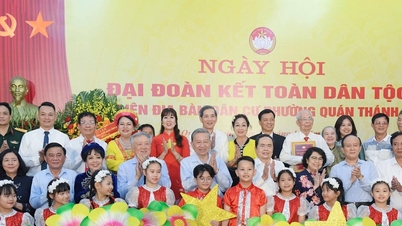













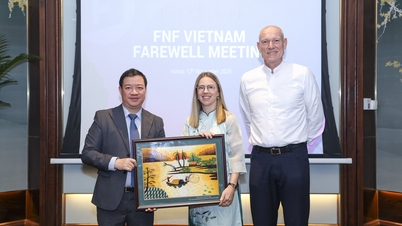




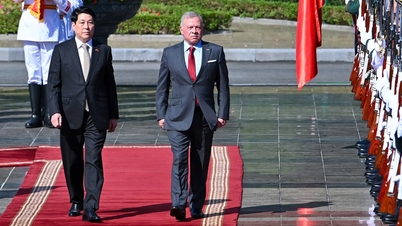
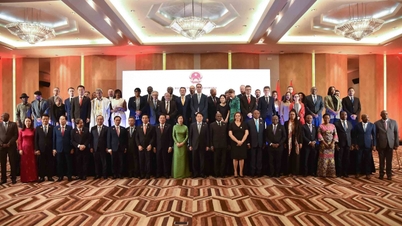


























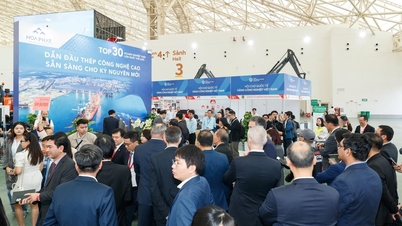



















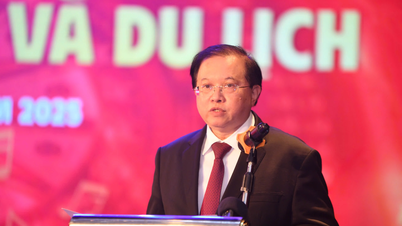

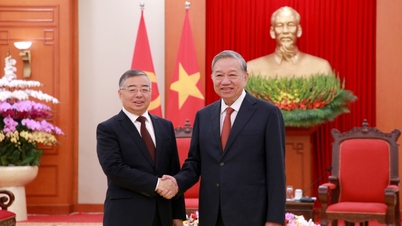





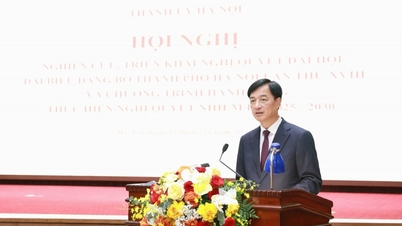












![Dong Nai OCOP transition: [Article 3] Linking tourism with OCOP product consumption](https://vphoto.vietnam.vn/thumb/402x226/vietnam/resource/IMAGE/2025/11/10/1762739199309_1324-2740-7_n-162543_981.jpeg)







Comment (0)